The coconut industry in the Philippines plays a key role in shaping national development. It is among the top ten export produce of the country as exhibited by the good export performance of both traditional and non-traditional coconut products. About one third of the country’s arable agricultural land or 3.26 million hectares is planted to coconut representing sixty four (68) out of total seventy nine (79) provinces, and 1,195 out of the 1,554 municipalities in the country. It provides a sustainable income source for Filipinos by way of employment generation through its many programs.
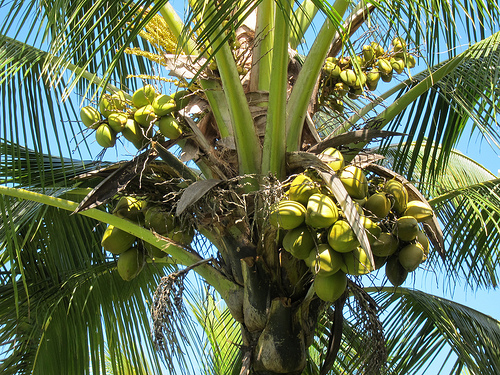
Coconut (Cocos Nucifera L.) is popularly known as the “TREE OF LIFE” because of the variety of products and by-products made from the tree namely: coconut meat, oil, juice, husk, shell, shell charcoal, leaves, husk, pith, inflorescence, trunk and roots.
Unfortunately, despite the numerous coconut plantations in the country, productivity levels remain low and one of the reasons may be attributed to lack of information on appropriate technologies for Coconut farming. This article is being written in the AGRIFISH Online to provide individual farmers basic technologies appropriate for productive coconut farming.
Selection of Breeds
There are many varieties to choose from and selection will be based on the needs of the farmer. Majority of the farmers utilize the coconut meat for copra. Copra is the dried meat from where oil is extracted for industrial and domestic use. If this is the primary reason for growing coconut, the farmer must select the breed that produces the most amount of copra per unit area and per unit time. Resistance to pest and diseases and stress factor such as resistance to drought and strong winds is also a consideration. In some cases, farmers consider exotic varieties such as macapuno.
There are two recognized types of coconut varieties: the a) dwarf and the b) tall variety. These are simply distinguished according to its height. Dwarf coconuts are usually early maturing. It produces nuts during its earlier years compared to the tall varieties. Tall varieties however yield more nuts than dwarf varieties. Description of some studied coconut varieties are indicated below:
| VARIETY | CODE | ORIGIN | DISTINGUISHING FEATURES |
| TALL | |||
| West African | WAT | Ivory coast | Nuts are distinctively angular and ridged at equatorial region; high nut producer often exceeding 100 nuts per year; homogenous; good GCA with MYD |
| Rennel | RIT | Solomon Is. | Very precocious palms with generally pear-shaped nuts; long peduncle and good fruit composition; copra per nut is 300 grams; very homogenous and uniform; good GCA with MYD and MRD. |
| Baybay | BAY | Philippines | Copra per nut is quite heavy although nuts do not really look big; very thin husk; homogenous and produces high number of leaves per year; bunches with short peducle and nuts are trapped between leaf axils; stem quite robust and firm; tolerant to FDMT. |
| San Ramon | SNR | Philippines | Usually bears extra large nuts when young needing 3 to 3.5 nuts per kilo copra. |
| Tagnanan | TAG | Philippines | Produces nuts with good fruit corn position; 350 g copra per nut and very homogenous; good GCA with MRD |
| Tahiti | TAT | Tahiti | High nut producer (116 per year); very heterogeneous and susceptible to leaf spots |
| Markham Valley | MVT | Papua New Guinea | Very robust trunk; big nuts with very thick husk |
| Gazelle Peninsula Tall | GPT | Papua New Guinea | |
| Vanuatu | VTT | Vanuatu | Produces many but small nuts and resistant to FDMT |
| Laguna | LAG | Philippines | Produces a fairly large number of nuts; 190 g copra/nut; hybrid cross with CAT green dwarf good |
| Andaman Giant | AGT | India | A strong and robust palm showing gigantic features. Leaves are long, petioles are long and thick, leaflets are long and wide. Nuts are very large and round with about 190g copra/nut. No toddy yield. |
| Bali | BAT | Indonesia | Fruits are large and round, unhusked nuts prominently flat-bottomed with pointed posterior. Copra per nut is 200 to 300g with some having as high as 450g. |
| Jamaica | JAM | Jamaica | Slender palm with slightly curved stem covered with rough leaf scars. Fruits are oblong and large, angular, green or brown with thick husk and shell. Late germinating in the Caribbean Islands and Atlantico Alto. |
| Bodiri | BDR | Sri Lanka | Bears 50 to 100 small nuts per bunch, copra per nut very low at 50g needing 20 nuts for a kilo of copra. Same as Maphrao-Phuang in Thailand. |
| Agta | AGA | Philippines | Husk of nut is streaked, making it look around and tough. Young nuts show black streaks |
| Laccadive | LCT | India | Similar to West Coast Tall (WCT) except for high oil content (72%). Nuts are medium sized and high yielder of toddy. Flower production and setting percentage are high. |
| Malayan | MLT | Malaysia | Robust palm with round stem and large bole. The base of the button has a rose-ring which can be seen clearly when perianth is removed. Large spherical fruit has a thin shell, sweet aromatic water and an average of 275g copra. |
| Macapuno | MAC | Philippines | A mutant form of the Laguna variety, nuts have soft and jelly-like meat. This character is lethal to the embryo which needs to be grown in artificial medium. Naturally occurring palms grown from normal nuts bear about 25%. MAC nuts may give 100% macapuno nuts. |
| Igoh Dukuh | IGD | Indonesia | Nuts have very thin husk and the shape of the shell conforms to the shape of the whole nut all the way. Shows high biennial bearing tendency. |
| DWARF | |||
| Catigan | CAT | Philippines | Nuts are medium sized, round with prominent stigmatic tip; copra per nut is about 200 to210g; husk is thick; peduncle and bunch rachis are long; young nuts and petioles are green. |
| Coconino | CNO | Philippines | Nuts are very small, oblong and smooth; stem quite thin and high yielder of toddy. Copra per nut seldom exceeds 100g. Coconino is a green dwarf. |
| Kinabalan | KIN | Philippines | Green dwarf, nuts are extra large, robust stem and copra per nut sometimes exceeds 300g; homogeneous. |
| Pilipog | PIL | Philippines | Nuts are green and round; female flowers, tip of roots and base of shoots of newly germinated seedlings are pink; copra per nut is 100g. |
| Tacunan | TAC | Philippines | Another green dwarf; spikelets are very short; nuts are medium to large oblong with broad equatorial diameter and pointed stigmatic; and unopened spathes are flat on distal end. |
| Aromatic | ARO | Thailand | Leaves are short with wide leaflets; male flowers are small and numerous; nuts are deep green when immature; sweet water and meat; mature nuts show a navel at the eye when split-opened. |
| Brazilian Green dwarf | BGD | Brazil | Very marked dwarfism; good fruit composition; nuts are rounder but much smaller than CAT or TAC nuts |
| Sri Lanka Green dwarf | SGD | Sri Lanka | Nuts small and prominently long with protruding stigmatic tip; strictly autogamous with numerous female flowers. |
| Malayan Yellow Dwarf | MYD | Malaysia | Hybrid cross with WAT called WAWA is high yielding; young nuts and petioles of leaves are yellow; great tendency for alternate bearing; nuts with thin husk and low meat content; autogamous; sensitive to Phytoptora fruit rot |
| Malayan Red Dwarf | MRD | Malaysia | Young nuts and petiole of leaves are bright orange; nuts thicker; self-pollinating; cross with RIT, TAG and BAY are very promising; sensitive to Phytoptora fruit rot |
| Niuleka | NLA | Fiji | Local green dwarf variety of Fiji with very short internodes and very dense crown; short, rigid leaves with closely-spaced wide leaflet and short stubby spadices. Predominantly cross-pollinating with large fruits. |
| Chowgat Orange Dwarf | COD | India | Found in Central kerala, COD is early bearing and produces medium-sized orange colored nuts with 135g copra. This variety retains unfertilized female at spike. |
| Mangipod | MGP | Philippines | A green dwarf which retains hundred of ripe nuts on the crown due to drying of nuts on the tree. Highly self-pollinating and shows very strict dwarfism. |
| Gangabondam | GGB | India | An intermediate variety which breeds 96% tru-to-type although showing a mixture of dwarf and tall characteristics; shows considerable variability in copra per nut rangin from 150 to 230 g with high oil content of 72%. |
| King Coconut (Gon Thembili) | GTB | Sri Lanka | Most famous coconut of Sri Lanka known for its high quality water. Shows a bole and somewhat larger trunk than dwarfs but highly self-pollinating. |
| Spicata | SPI | Produces unbrached inflourescences with more female flowers than male; may occur in tall or dwarfs and when open-pollinated, some may produce unbranched inflourescence while others may not. | |
| Tampakan | TMP | Philippines | Nuts are long and pointed. Shape of shell and cavity conforms exactly to the shape of inhole nut which has a very thin husk. |
Propagation and Care of Seedlings
There are many types of propagation techniques.
Natural: Coconut is a monoecious crop (having both the male and female flowers are borne in the same plant). When the male part fertilized the female flower, the resulting offspring is called Inbred. This method follows the same characteristics the mother plant has.
Controlled Pollination. The production of hybrid is done by removal of male flowers and artificial pollination of female flowers of a different tree during pollination time. To ensure no inbreeding is accidentally done, male flowers are removed and female flowers are covered to prevent inbreeding.
Tissue culture is also practiced. This adopts the genetic characteristics of the mother tree. The advantage of this method is it multiplies easily without using a large area. It may also be a method to replicate pest and disease resistant varieties.
Nuts are subjected to selection where those that are barren, dry or not sloshing; deformed and damaged nuts are discarded. Nuts are placed in cool dry place until they germinate. These nuts contain meat and water that support and nourish the growth of the embryo during germination. Nuts are placed in germination beds to facilitate careful selection of good seedlings. All seedlings that germinate within 11 to 15 weeks from sowing or 84% whichever comes first shall be selected.
Planting in polybags reduces transplanting shock since most of its roots are not disturbed during transplanting. Recommended polybags are black 40 cm long, 40 cm high and 0.20 mm thick.
Otherwise seedbeds are prepared for nursery. Seedbed should have a very friable soil. The land must be plowed several times. Blocks with dimensions of 1 meter width or less are laid-out to allow nursery caretakers to move freely. In between blocks, footpath are maintained at 40 cms apart. Seeds are laid on its side in the furrow and covered with soil so that about one-fourth of the nut diameter is above the ground. Shading of any sort must be provided. Young coconut trees could not survive under direct sunlight specially during summer months.
Coconut Plantation Establishment
Site Selection
- Land must not be water logged. Coconuts do not grow well on flooded land.
- Soil depth must not be less than 1 meter. Root canopy is more than 1 meter.
- Rain water is available most of the year. Areas that have distinct dry season is not preferred.
Clearing and Levelling
First activity in Field planting is clearing of weeds, debris and other unwanted crops. Most unwanted crops are old coconut trees that have pest and diseases. It is very important to properly dispose infested / diseased coconut trees. If possible burn or bury into deep pits to avoid contaminating newly planted coconut trees.
Lay-outing and Planting
Triangular system of planting coconut is recommended with rows laid out in a north-south direction. The distance between palms in a row should be 9 m x 9 m to 10 m x 10 m for tall varieties and 8 m x 8 m to 8.5 m x 8.5 m for dwarf hybrid coconuts. Staking is done to ease in locating where the tree will be planted.
After staking, dig a hole with the dimension of 50 cm diameter and 50 cm depth. Seedlings are ready to for planting when they reach 7 months in seedbeds or pots. Best time to plant is during the onset of the rainy season. This is to avoid drying up of newly planted coconut trees. And to ensure greater survival since the trees roots have established itself and ready to absorb moisture left in the soil during the summer months.
Before the seedlings are placed on the hole, fertilizers are applied inside the hole as basal application (refer to table on fertilization below). Prompt replanting of dead trees must be done to avoid uneven growth of coconut trees.
Plantation Management
- Cultivation – to remove weeds and improve soil moisture absorption and aeration.
- Irrigation and drainage – water logging and drought damages significantly coconut trees.
- Cover crops and control of weeds – Cover crops are beneficial to coconut because it prevents erosion during rainy season, excessive water lost during summer months. Some leguminous cover crops like Centrosema and Stylosanthes fixes nitrogen in the soil. Competition for sunlight, water and nutrients with coconut however must be avoided. Two serious weed problems for coconut are cogon and lantana. These two weeds can completely take over the small coconut tree.
- Intercrops – these are extra sources of income for the farmer. This is explained further on Chapter VI below. Considerations in selection of crops are market for the intercrop, competition it may offer to coconut as regards to water and nutrient requirement, tolerance or need for shade and dangers it may offer as alternate host for pest and diseases.
- Animals under the coconut – same as intercrops these are extra income for the farmer. However, caution must be considered in over crowding in one area. Soil tends to be compacted in overgrazed areas especially for cattle.
Nutrient Management
| Component | N | K | CL | S |
| Field Planting | 30 g | 75 g | 66 g | 36 g |
| 6 months from Field Planting | 40 g | 125 g | 111 g | 49 g |
| 1 year | 0.10 kg | 0.30 kg | 0.26 kg | 0.12 kg |
| 2 years | 0.15 kg | 0.45 kg | 0.40 kg | 0.18 kg |
| 3 years | 0.20 kg | 0.60 kg | 0.53 kg | 0.24 kg |
| 4 years | 0.30 kg | 0.80 kg | 0.70 kg | 0.36 kg |
| 5 years and above | 0.40 kg | 1.00 kg | 0.90 kg | 0.48 kg |
Pest and Disease Management
Two main methods in controlling pest and diseases are a) chemical and b) biological. Chemical makes use of insecticides, herbicides, fungicides, etc as a means of control. While biological means utilizes parasites and predators.
Harvest Management
For the purpose of obtaining high oil content in copra, the nuts should be harvested not earlier than twelve months after pollination. Harvesting using a “Halabas” (a sickle mounted on a bamboo pole) is much faster than climbing each tree. A picker can harvest 100 trees a day using the “Halabas” while only 25 trees a day for climbing each tree.
Intercropping
The active root system of a coconut palm is concentrated only within 2 meters from its base. Therefore, for a coconut plantation with a spacing of 8m x 8m leaves about 8,000 sq. meters space is left unproductive. To maximize the use of land and other resource such as manpower, machinery, fertilizer, pesticide, etc, intercropping is then adopted. Another reason why intercropping is practiced is the unusual fluctuations of the price of copra. Inclusion of other crops lessens the burden of the coconut farmer by giving alternative sources of income.
Two types of cropping pattern:
- Sequential crop – producing two or more crop in single stand one after the other on the same plot during the same year.
- Intercropping – growing two or more crop species at the same time in the same field.
Five ways of Intercropping:
- Mixed intercropping – simultaneous growing of two or more crop specie in an irregular arrangement, i.e. without a well-defined planting pattern
- Row intercropping – simultaneous growing of two or more crop specie in a well-defined row arrangement
- Strip intercropping – simultaneous growing of two or more crop species in a strip wide enough to allow independent cultivation, but at the same time, sufficiently narrow to induce crop interactions
- Relay intercropping – planting one or two crops within an established cropping pattern wherein the final stage of the first crop coincides with the initial development of the other crops
- Multi-storey cropping – coconut + black pepper + cacao + pineapple are planted so that each crop produces canopies at different heights.
One general rule in intercropping is to arrange to rows of intercrop in a way that these receive maximum sunlight throughout the day. With regards to selection of crops, the following factors must be considered:
- Market for the intercrop – coconut farmers must ensure they know where to sell the products of the intercrop. Alternate market outlets must also be determined in case pole vaulting happens.
- Competition it may offer to coconut as regards to sunlight, water and nutrient requirement. – Intercrops must be selected so as not to compete with sunlight, water and nutrient. Tree, root canopy must carefully be calculated so as not to cover other intercrop. In very tall coconut, sunlight increases as the height of coconut trees becomes taller.
Ecological Factors
- Microbial activity – Interplanting cacao between coconut palms showed success in many trials. Coconut-cacao intercrop improved the microbial activity of the rhizosphere. There was an increase in organic matter component of the soil caused by the periodic shredding of cacao leaves. Nitrogen fixing and phosphate solubilizing bacterial activity also increased. As a result, coconut yields were retained and cacao yields increased. Presently, PCA with funding from DA BAR will be spearheading an agri-business development project on Coconut-Cacao Intercropping project.
- Increase of pest and disease – some intercrop favor the build up of unfavorable pest and disease population. Observations on different trials are being documented for reference purposes. In other instances, however, build up of parasites and predators occur. This favors slow down of pest and disease population. In fact, some institutions like PCA and BPI are into direct research on rearing parasites and predators.
Another option in Coconut-based Farming System is Animals under coconut – the main benefit of grazing animals under coconut is for the removal of weeds. Manual and chemical process of weeding is done away with. Manure from the animals also helps in increasing the organic matter and nutrient of the soil. A disadvantage however especially for large animals is the over grazing which leads to compacted soil. Coconut roots are sensitive to aeration. To avoid this, cattle grazing must be supervised carefully.
Products and By-Products
- Copra – is the dried coconut meat. It is the source where coconut oil is extracted for many uses.
- Oil – extracted processed/filtered oil obtained from copra. It is mainly used for cooking but also used for many other purposes; moisturizer, liniment for muscles and joints, cosmetics, medicines, soaps and detergents, paints, biofuels, etc.
- Coconut milk – the liquid obtained by pressing grated coconut meat. This is used for cooking. And making home-made coconut oil.
- Latik – heat coagulated content of coconut milk. This is also used for food purposes.
- Dessicated coconut – dried coconut grated meat mainly prepared for food uses.
- Coconut Flour – this is the de-oiled dessicated coconut that is finely grounded. This is used in baking.
- Coconut Shell – This is the protective covering of the coconut meat and water. This makes a very good source of charcoal. This is a very good fuel for domestic cooking.
- Activated charcoal – found to possess the ability to adsorb gases and vapors hence finds uses in gas mask, cigarette filters, removal of bad odors from air-conditioning, freezers and refrigerators, and many other adsorption capabilities. Continuing research on this is making advances lately. Activated charcoal are used in filtering water and air.
- Charcoal briquettes – coconut shell charcoal are processed into briquettes so that it is easier to transport. Specifically used in grills.
- Novelty items – local craftsmen make indigenous novelties from shells such as lamps, figurines, picture frames, musical instruments, souvenirs and many more.
- Coconut Husk – the fibrous outer covering of the nut. This part extends from the nut skin to the shell and varying thickness up to 5 cm.
- Coco-coir – The hair-like thread extracted from the coconut husk by mechanical method or by the decorticating machine. The resulting products are coco dust and coco coir. Coco coir is used for upholstery, mattress fibers, filter pads, carpets, erosion nets, insulation material, biodegradable pots, orchid and ornamental planting medium, etc.
- Coco dust – Are the medium collected after separating the coir from the husk. It has very good water retention capabilities thus used mainly as potting medium.
- Coconut Water – the liquid found inside the coconut. It is an excellent and readily available drinking water. The quality of water varies according to the age of the nut. Younger nut water is largely consumed locally as beverage. Water from mature nuts is used as raw material for making nata de coco, vinegar, intravenous fluid, electrolyte, wine and alcohol. Large uses however have not prospered
- Coconut Sap – a very sweet juice obtained from a young inflourescence. Locally known as Tuba. Toddy in India.
- Liquor – Coco-sap are left to ferment and made into alcoholic beverages called “Tuba”. In Samar and Leyte province, they add bark from a local tree and ferment to produce “Bahalina”. In Southern Tagalog and Bicol area, coco-sap are distilled and made into a strong alcohol called “Lambanog”.
- Vinegar – Coco sap are also made into vinegar.
- Coco sugar – Coco sap are sometimes cooked to produce sugar. This has been a long practice in some places but not in very large quantities.
References
Banzon, Julian A and Velasco, Jose R. “Coconut” Production and Utilization. Copyright 1982
Dar, William D. “Coco-based Farming Systems” State of the Knowledge and Practice 1990
Bourgoing, Raymond D “Coconut: A pictorial Technical Guide for Smallholders” Edited by Dante Benigno 1991
Source: bar.gov.ph
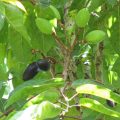
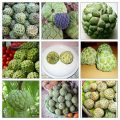
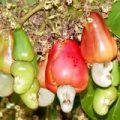
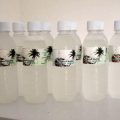



Hello Gerry Cheng
Are you still interested in virgin coconut oil?
I know a supplier that could possibly meet your requirement.
may i ask if philippines po is producing coco aminos? (soy sauce substitute)
May idea po kayo saan ako makakabili ng dahon ng nyog, yung katulad po sa palaspa
Where can we get planting materials for dwarf coconut?
one know suppliers of virgin coconut oil?
one know suppliers of virgin coconut oil?
thanks